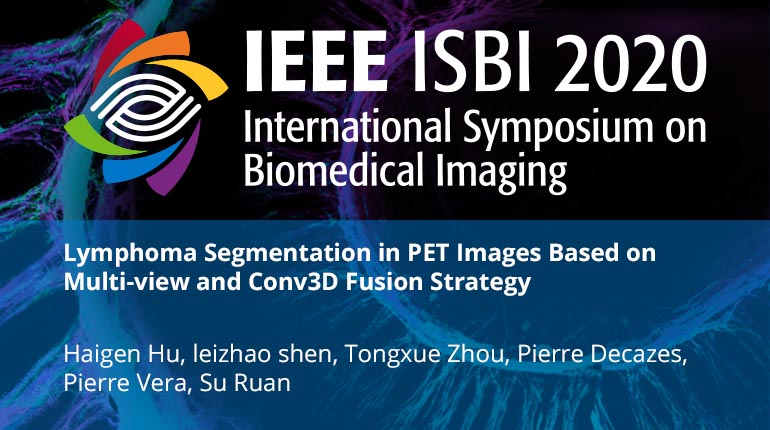
Already purchased this program?
Login to View
This video program is a part of the Premium package:
Lymphoma Segmentation in PET Images Based on Multi-view and Conv3D Fusion Strategy
- IEEE MemberUS $11.00
- Society MemberUS $0.00
- IEEE Student MemberUS $11.00
- Non-IEEE MemberUS $15.00
Lymphoma Segmentation in PET Images Based on Multi-view and Conv3D Fusion Strategy
Due to the poor image information of lymphoma in PET images, it is still a challenge to segment them correctly. In this work, a fusion strategy by 2D multi-view and 3D networks is proposed to take full advantage of available information for segmentation. Firstly, we train three 2D network models from three orthogonal views based on 2D ResUnet, and train a 3D network model by using volumetric data based on 3D ResUnet. Then the obtained preliminary results (three 2D results and one 3D result) are fused by combing the original volumetric data based on a Conv3D fusion strategy. Finally, a series experiments are conducted on lymphoma dataset, and the results show that the proposed multi-view lymphoma co-segmentation scheme is promising, and it can improve the comprehensive performance by combing 2D multi-view and 3D networks.
Due to the poor image information of lymphoma in PET images, it is still a challenge to segment them correctly. In this work, a fusion strategy by 2D multi-view and 3D networks is proposed to take full advantage of available information for segmentation. Firstly, we train three 2D network models from three orthogonal views based on 2D ResUnet, and train a 3D network model by using volumetric data based on 3D ResUnet. Then the obtained preliminary results (three 2D results and one 3D result) are fused by combing the original volumetric data based on a Conv3D fusion strategy. Finally, a series experiments are conducted on lymphoma dataset, and the results show that the proposed multi-view lymphoma co-segmentation scheme is promising, and it can improve the comprehensive performance by combing 2D multi-view and 3D networks.
 Cart
Cart Create Account
Create Account Sign In
Sign In





